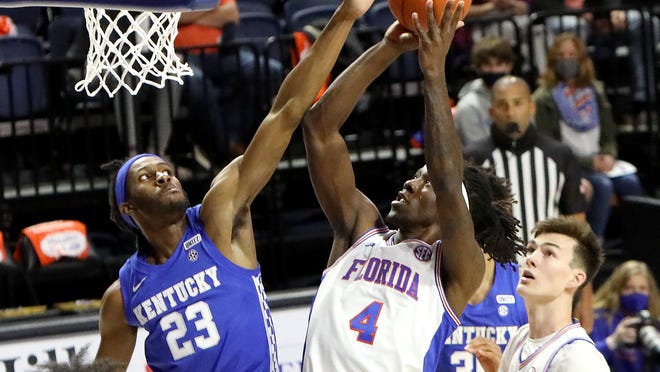Point Spread In Basketball Betting
The most popular betting market in college hoops focuses on point-spread wager or side wagers. The spread was developed to provide a balance for both teams involved in a matchup, hoping to have bettors wager on the weaker to team that was receiving points and that team is labeled as the underdog. Basketball Point Spreads Point Spread betting is basically betting by how much a certain team will win or lose. The whole concept of point spreads is based on the principle of underdogs and favorites.
- Inside Vegas College Basketball
- Point Spread In Basketball Betting Against
- How To Bet On A Point Spread
- Point spread betting is one of the most popular and simplest forms of basketball bets that you can place. While this is a seemingly basic bet, it is one of the most utilized bets even by professionals. Remember, the complexity of a bet does not equal better odds or bigger payouts.
- NCAA college basketball odds, point spreads, and betting lines (ATS, over under, money lines) updated multiple times daily.
When it comes to sports betting lines, you probably are wondering what the lingo of lines, odds, and spreads really mean. Understanding what these terms mean is essential to making proper picks on your favorite teams. For the most part these rules apply to all the main sports such as football, basketball, soccer, and hockey. But there are some key differences when betting against the big leagues like the NFL, NBA, and MLB.
Super Bowl and Stanley Cup Betting Odds
A betting line is another terminology for point spread, which is tied to the outcome of the event. It is a forecasted prediction of how many points an anticipated stronger team will win by against a weaker team. In the betting world the stronger team is referred to as the favorite, and the weaker team is referred to as the underdog. These collectively are referred to as spreads.
NHL, Baseball, WNBA Playoffs Betting Picks
In a point spread, you have to bet against the forecasted outcome one way or the other, you cannot just pick a team to win lose or it without laying down a lot of money or it would be too easy to beat a highly likely winner. Instead if a team is predicted to win by 7 points, the spread would be -7 towards that team. You then must place on a bet on whether you think the favorite would beat the underdog by at least 7 points, or if you think the underdog could cover and lose by less than 7 or win. Sometimes a game is considered highly contested and balanced that you might have what is called a pick-em where you simple pick which team will win. Point spreads are common in the NFL.
NBA Point Spreads and NCAA Lines Reviewed
After point spreads are established, you can then look at the moneyline bet. This is generally correlated to the point spread except it shows how money you can win based on your wager. Some sports do not use a point spread but rather just stick to a moneyline bet. For example, a team that was a -7 favorite would likely have a moneyline negative as well, say -200. That means, you would have to bet $100 to win $200. Alternatively there is a plus bet that goes with the underdog, say at 250. That means if you bet 100 and the underdog wins, you can win $250. Moneyline bets generally involve a higher wager to make money as opposed to point spreads. Moneyline picks are the most common wager instrument in the major sports of NBA, MLB, hockey, and soccer.
Nascar, PGA Golf and MMA UFC Betting Lines
In unique situations, where a game has a lot of prestige such as the NFL super bowl , NBA playoffs, or the Stanley Cup, you can bet on prop bets which are bets on specific things that could happen during a game. This is a play strictly based on odds of something happen against it not happening. An example might be whether a field goal would be the first type of score in the football game. At any time as people are betting one way or the other, the odds will adjust as people make picks one way or the other.
Premier League, British Open Championship and College Football Odds Every Week
Opening lines generally come out a week before an event but for major events like the Superbowl, it might be out for two weeks once the matchup is established. Football events opening lines generally come out on a Tuesday after all the previous weeks games have been played and is usually the sport most heavily used to gamble on. Basketball and MLB have games more frequently and usually the opening line might only exist for the day of an event.
Point spread betting is the most popular form of sports betting. The vast majority of sports wagers use a point spread thanks to the popularity of football and basketball. Even though this type of betting is so popular, it may take awhile to understand.
The point spread is sometimes known as an equalizer for sportsbook operators. All teams aren’t created equally, so sportsbooks can create a point spread for a game so that each team playing has an almost even chance of winning the game. In a way, the point spread will even the field for both teams.

The point spread gives a reason for bettors to risk money on both teams. The better team playing in the game is considered favorite. They have to win by the point spread offered by the sportsbook. The favorite in a game is listed as being minus (-) the point spread.
The worse of the teams playing in the game is called the underdog. The bettor wins if this team wins the game outright or loses by an amount smaller than the point spread. The underdog in a game is listed as being plus (+) the point spread.
Let’s use this past Super Bowl between the Tampa Bay Buccaneers and Kansas City Chiefs as an example.
Inside Vegas College Basketball
Using this example, the Chiefs were 3-point favorites over the Buccaneers. The Chiefs needed to win by 4 or more points to cover the spread.
Likewise, the Buccaneers were 3-point underdogs. That means the Buccaneers needed to win the game outright or not lose the contest by 4 points or more. At Chiefs -3, if they won by exactly 3 points, the betting result would have been a “push” and bettors for both sides would have gotten their wagers refunded.

The Buccaneers pulled off the upset, winning by a score of 31-9, and rewarded bettors who backed them at +3.
Point Spread In Basketball Betting Against
Point spread betting odds
/cdn.vox-cdn.com/uploads/chorus_image/image/68710644/1297522338.0.jpg)
Point spreads are usually set with -110 odds, but pricing often fluctuates at online sportsbooks. This is the sportsbook operators’ house edge. The odds guarantee the sportsbook operator will see a little money over time. When the odds are set at -110, the bettor must wager $110 to win $100 (or $11 to win $10).
The odds on a point spread are most commonly known as the vigorish or “vig” for the sportsbook. You might hear this small profit margin for the sportsbook called the “juice” by some sports bettors.
Point spread FAQs
What does ‘pick em’ or ‘pick’ mean in NFL betting?
A “pick em” (sometimes seen as “pick”) is when the teams have a point spread of zero, meaning neither team is favored. In this instance, you’re essentially picking moneyline and your bet will be determined on the winner alone.
What does -7 and +7 mean in NFL betting?
A spread of minus-seven (-7) means that a is favored to win the game by a touchdown (technically, a touchdown and the extra point). A team favored by -7 must win the game by eight or more points to win the bet. If the team wins by seven, the result is a “push” and the bet is refunded.
A spread of +7 means the team must win the game or lose by fewer than seven points to win the bet. A loss by seven would result in a push.
What does -3 and +3 mean in NFL betting?
How To Bet On A Point Spread
A -3 spread means that the favorite must win by more than a field goal to win the wager. A three-point win would result in a push and the sportsbook would refund the wager.

A spread of +3 means the team listed as the underdog must win the game or lose by fewer than three points to cash the bet. A three-point loss would be graded as a push by the sportsbook and the bet would be refunded.
Why are point spreads in the NFL so much lower than in college?
In 2019, the Baltimore Ravens led the NFL in point differential per game at +13.7 points; the Miami Dolphins ranked last in the NFL in point differential per game at -11.7. Even Kansas City– known for their explosive offense– had an average point differential in 2019 of just 9.7 points. The net point differential in the NFL is -14.1, or -0.9 points per game. Basically, the talent differential in the NFL is so minute that even mismatched teams often draw games within a score of each other.
NFL spreads are most commonly between one point and four, with six being a heavy favorite and extremes coming out around 15-20 point favors. (For those wondering, the 1941 Chicago Bears hold the NFL record of point differential at +15.7 points per game. Conversely, Ohio State had a +33.1 average point differential in 2019.)
Point spread and odds movement
Sportsbook operators often aim to have equal money on both sides of a point spread. When the money is exactly split the sportsbook operator will see the exact vigorish as their profit margin. If all things are equal over time this will maximize how much money the sportsbook operator can make.
In an effort to have equal money on both sides of a wager, the sportsbook operator will move the point spread to attract money on the side that customers aren’t betting on. The odds for a point spread might change before the actual point spread. There are certain point spread numbers, like 3 and 7 in football, the sportsbook operators would like to avoid moving away from since the final score margin falls on these two numbers most often.
For example, if a lot more money is wagered on the New England Patriots -3, the vig may shift from -112 to -115 and -120 before the line moves to -3.5.
Run and puck lines
Football and basketball games are mostly bet using a point spread. The less popular major sports, baseball and hockey, are mostly bet using a moneyline. In an effort to make baseball and hockey more appealing to point spread bettors, the sportsbook operators offer run and puck lines, respectively.
These alternative lines give point spread bettors a chance to wager on other sports using a more familiar method of betting. Since points (runs and goals) aren’t as easy to come by in baseball and hockey, the odds with the lines may have a wider spread than a football or basketball game.